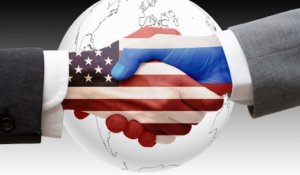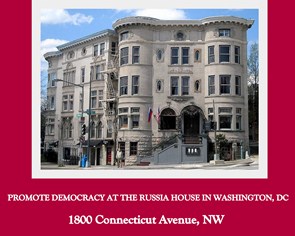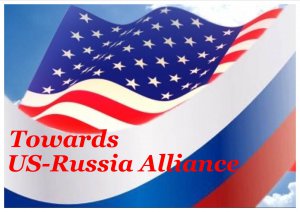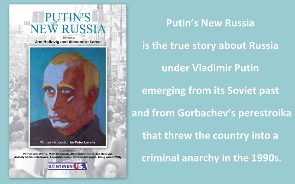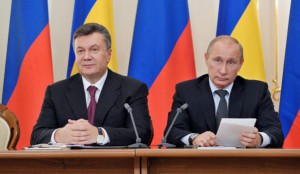
 The outcome of last week’s Russia-Ukraine talks in Moscow was predictably unexpected. Besides outstanding USD 15 billion – worth allocation of Russia’s National Welfare Funds in Ukrainian Eurobonds and drastic 33% cut of the Russian export gas prices that Moscow conceded to Kyiv, 14 other agreements provided legal framework for multi-billion joint industrial projects in hi-tech (space, aviation, ship-building, engine machinery, nuclear power), transport infrastructure (new multimodal gateway at the frontier Kerch strait) and lifting a number of mutual trade limitations. The agreements do not envisage any political commitments like joining Russia-led Customs Union or restricting budgetary expenses and salary freeze as it was requiredby the IMF.
The outcome of last week’s Russia-Ukraine talks in Moscow was predictably unexpected. Besides outstanding USD 15 billion – worth allocation of Russia’s National Welfare Funds in Ukrainian Eurobonds and drastic 33% cut of the Russian export gas prices that Moscow conceded to Kyiv, 14 other agreements provided legal framework for multi-billion joint industrial projects in hi-tech (space, aviation, ship-building, engine machinery, nuclear power), transport infrastructure (new multimodal gateway at the frontier Kerch strait) and lifting a number of mutual trade limitations. The agreements do not envisage any political commitments like joining Russia-led Customs Union or restricting budgetary expenses and salary freeze as it was requiredby the IMF.No doubt that the deals became anoxygen bag for official Kyiv, the EU & IMF commissioners (commissars in Russian, a word associating them in the eyes of both Russians and Ukrainians with the ruthless bolshevik emissaries of the 1920s) tried to hug to death. President Yanukovich could hardly conceal his content stating "today’s fruitful work that resulted in signing of the documents was done thanks to political will of Russian President Vladimir Putin.” Indeed, the agreements are in full compliance with the pre-election promises of candidate Yanukovich who took Bankovaya (presidential office in Kyiv) in February 2010 thanks to the notable support of the pro-Russian residents of industrial centers in the east and south of Ukraine. The deal guarantees the revival of Ukrainian technological chains with the Russian partners. The two countries have shared integrated industrial systems for centuries. (According to official Ukrainian statistic data, for the last 3 years of sluggish ‘euro-integration’ Ukraine has lost around 15% of industrial production, 37% of currency reserves and 16% of exports to Russia, its principal trading partner). Ukrainian Prime Minister Mykola Azarov estimates e.g. that overall revenue of a joint venture producing modern version of the legendary AN-124 Ruslan heavy strategic airlift jet will reach USD 13 billion. No wonder that the Moscow agreements were greeted with relief in the Ukrainian industrial centers and by the trade unions.
The Moscow-Kyiv deal has expectedly caused a controversial reaction from the EU capitals and Ukrainian opposition loosing the ground for further protest actions. While Stefan Füle, the EU Commissioner for Enlargement and Neighbourhood Policy, was quite accurate in his statement that the papers signed "do not contradict the draft Association Agreement (AA) Ukraine”, the Swedish Poltava revisionist FM Carl Bildt was inadequately categorical in his Twitter:
 "Russian emergency loans to Ukraine risk further delaying urgent economic reforms and necessary EU modernization. Decline might continue.”
"Russian emergency loans to Ukraine risk further delaying urgent economic reforms and necessary EU modernization. Decline might continue.”
Has the EU ever proposed a modernization plan for Ukraine comparable with the Russian investments? The truth is that such plan never existed. The net balance of the EU-Ukraine talks on AA resulted in proposed 1 billion euro of EU financial assistance in 7 years. Meanwhile the Ukrainian government had to invest 165 billion euro in 10 years to meet the technological requirements for Ukrainian industries to get access to the European markets.
The only tangible investment from the West in 2013 was the US Chevron’ production sharing dealto allocate USD 350 million into the poisonous shale gas exploitation in Western Ukraine.
The outraged reaction on Moscow accord by the Ukrainian opposition, co-sponsored by local tycoons and multiple foreign sources, confirm the fact that the welfare of the Ukrainian people is the last consideration they take into account when speaking up trite slogans to the freezing knots onEuromaidan.
So the overall impression about the Eastern Partnership gambit played by the EU at the cost of 2.5 billion Euros of the European taxpayers with quasi-zero outcome is simple: the ignorant and irrelevant bureaucracy is savvy in PR and reporting, but impotent in serious geopolitical games. The socio-economical reality and cultural constants still do matter in our world.
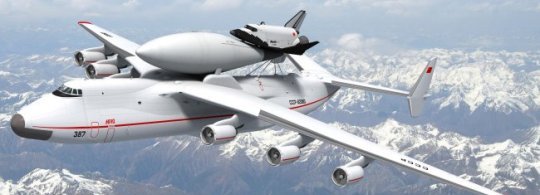 On the photo: Antonov An-225 Mriya, the largest strategic airlift cargo aircraft in the world, is the symbol of Russian-Ukrainian technology cooperation. Powered by six turbofan engines, MRIYA is the heaviest aircraft with a maximum takeoff weight of 640 tonnes and the biggest heavier-than-air aircraft in terms of length ( 84 m, 275 ft 7 in) and wingspan (88.4 m or 290 ft 0 in) in operational service. It holds the absolute world records for an airlifted single item payload of 189,980 kilograms (418,834 pounds), and an airlifted total payload of 253,820 kilograms (559,577 pounds). MRIYA (Мрія) means DREAM in Ukrainian.
On the photo: Antonov An-225 Mriya, the largest strategic airlift cargo aircraft in the world, is the symbol of Russian-Ukrainian technology cooperation. Powered by six turbofan engines, MRIYA is the heaviest aircraft with a maximum takeoff weight of 640 tonnes and the biggest heavier-than-air aircraft in terms of length ( 84 m, 275 ft 7 in) and wingspan (88.4 m or 290 ft 0 in) in operational service. It holds the absolute world records for an airlifted single item payload of 189,980 kilograms (418,834 pounds), and an airlifted total payload of 253,820 kilograms (559,577 pounds). MRIYA (Мрія) means DREAM in Ukrainian.


_jpg/250px-ElbeDay1945_(NARA_ww2-121).jpg)
